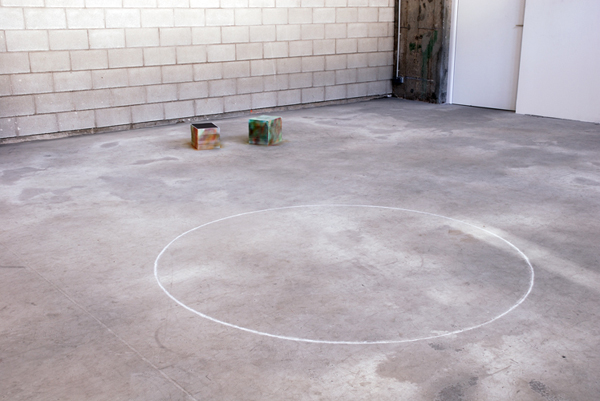In the Stream of Life

- View of the exhibition "In the Stream of Life", Bétonsalon - Center for Art and Research, Paris, 2007 - 2008. Image: Aurélien Mole
Patrick Bernier, Olive Martin et Myriame El Yamani, Simon Dybbroe Møller,
Maria Eichhorn, Michel François, Aurélien Froment, Ryan Gander, Mario Garcia Torres, Loreto Martinez Troncoso, Falke Pisano, Clément Rodzielski, Günter Saree, Yann Sérandour, Lawrence Weiner, Ian Wilson, Jordan Wolfson
Curators: Mélanie Bouteloup and Christophe Gallois
Through an exhibition, performances, lectures, talks and projections, In the Stream of Life explores the modes of circulation of an artwork: How can a work be understood in terms of the circulation of an experience? The exhibition’s title is borrowed from Lawrence Weiner’s film Plowman’s Lunch (1982), in which one character states: “An idea only has meaning in the stream of life.” Through these words, Weiner suggests that an idea, or an artwork, must be confronted with the world, and must circulate within it, in order to make sense. In Weiner’s film, the work-as-circulation is exemplified by the inclusion of several of his works, his well-known “statements” within the dialogue: these are read, recited, and even painted in public space. These various possibilities activate the work “in the stream of life.”
The circulation and activation of these works can be likened to the notion of storytelling as developed by Walter Benjamin in his essay The Storyteller, in which he defines the storyteller as the one who “takes what he tells from experience-his own or that reported by others. And he in turn makes it the experience of those who are listening to his tale.” Benjamin distinguishes between the circulation of the storytelling, based on a shared experience and a multiplicity of interpretations, and the non-circulation of information, which is always determined by an explanation that narrows its meaning and its reach. For Benjamin, these two modes of transmission can also be differentiated by the specific temporalities that they entail. While information does not “survive the moment in which it was new,” storytelling, on the contrary, is characterised by an ever-renewing temporality. Storytelling “preserves and concentrates its strength and is capable of releasing it even after a long time.”

- View of the exhibition "In the Stream of Life", Bétonsalon - Center for Art and Research, Paris, 2007 - 2008. Image: Aurélien Mole
Transposed into the field of visual arts, the notion of storytelling developed by Benjamin raises several questions that we hope to address in this project. The first concerns the use of speech as a mode of circulation. How can a work be activated? How can it be told? Aside from orality, storytelling may also concern works that are not directly connected to the voice. In The Storyteller, Benjamin shows that storytelling is not limited to oral transmission : what is at stake is a specific relation to the work, approached in terms of circulation and activation in time. The exhibition In the Stream of Life assembles works where narrative is at play, conceived as the nexus of a network of connections and complex references. In relation to this idea of storytelling, we envisage the exhibition as a “theatre of operations”, an expression borrowed from artist Michel François, as a space and time for circulation between the works.
Share